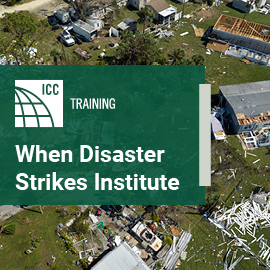
USFA report shows rise in the trend of overall fire deaths
The National Fire Data Center of the U.S. Fire Administration (USFA) released the 20th edition of Fire in the United States 2008–2017 — a statistical overview of the fires in the United States from 2008 to 2017 — which addresses the overall national fire problem and provides the fire service, the media, researchers, industry, government agencies and the general public with information that motivates corrective action, sets priorities, targets specific fire programs, serves as a model for state and local analyses of fire data, and provides a baseline for evaluating programs. The report focuses on the national fire problem with an emphasis on the magnitude and trends of the fire problem, the causes of fires, where they occur, and whom fire impacts.
Over the 10 years from 2008 to 2017, the U.S. had an annual average of 1,344,100 fires, resulting in 3,190 civilian deaths, 16,225 civilian injuries and $14.7 billion in direct property loss each year. The data shows that while 10-year trends for fires and fire-related injuries have decreased, 10-year trends for fire-related deaths and dollar loss have increased. Older adults, African-American males and wildland fires continue to be areas of concern.
The report finds that the focus for fire injury prevention should be on adults aged 25 to 64 and those aged 80 to 84. In particular, people with limited physical and cognitive abilities, especially older adults (aged 65 and older), are at a higher risk of death from fire than other groups. Older adults accounted for 40 percent of all fire deaths and 15 percent of estimated fire injuries in 2017. Males, particularly African-Americans and American Indians/Alaskan Natives, remain at a higher risk of death from fire than the general population. African Americans constituted a large and disproportionate share of total fire deaths, accounting for 19 percent of fire deaths in 2017.
Outdoor or wildland fires — fires that did not occur in buildings, other structures or vehicles and were confined to trees, brush, grass or refuse — constituted roughly half of all fires. An average of 551,750 outside fires were reported each year over the 10-year period. Over 10 years, an average of 75 deaths resulted each year from outside fires; injuries averaged 775. Although deaths showed an upward trend of 213 percent, this is due primarily to the fluctuations in the small numbers of deaths. Injuries showed an upward trend of 23 percent. Dollar loss for outside properties increased by 59 percent over the 10 years of 2008 to 2017.
The fire problem varies from region to region and state to state because of variations in climate, socioeconomic status, education, demographics and other factors. In 2017, four states (Alaska, Arkansas, South Dakota and West Virginia) had fire death rates that exceeded 20 deaths per million population. The District of Columbia and 22 states, mostly situated in the Southeast and Midwest, had death rates between 11.3 and 20 deaths per million population. Additionally, 21 states had fire death rates at or below the national fire death rate — 11.2 deaths per million population. Ten states — Alaska, Arkansas, Iowa, Louisiana, Mississippi, Missouri, South Dakota, Tennessee, Vermont and West Virginia — accounted for 49 percent of the national total fire deaths. Unless their fire problems are significantly reduced, the national total will be difficult to lower.
Each year, thousands of Americans die, tens of thousands of people are injured and property losses reach billions of dollars as a result of the U.S. fire problem. There are huge indirect costs of fire as well, including temporary lodging, lost business revenues, medical expenses and psychological damage. To put this into context, the annual losses from floods, hurricanes, tornadoes, earthquakes and other natural disasters combined in the U.S. average just a fraction of those from fires, according to the National Weather Service’s Summary of National Hazard Statistics for 2017 in the United States.
The Natural Hazard Mitigation Saves: 2017 Interim Report — released in January 2018 by the National Institute of Building Sciences and sponsored by the Federal Emergency Management Agency, the U.S. Department of Housing and Urban Development, the Economic Development Administration, the International Code Council, the Insurance Institute for Business & Home Safety, the National Fire Protection Association and the American Institute of Architects — highlighted that designing new buildings to exceed provisions of the 2015 International Residential Code and International Building Code and meeting the 2015 International Wildland Urban Interface Code, resulted in significant savings from implementing mitigation strategies and investing in hazard mitigation: investing in hazard mitigation measures to exceed select code requirements can save the nation $4 for every $1 spent.
The report concludes that there has been remarkable progress in reducing the adverse effects of fire on the U.S. Several factors continue to contribute to this progress, including nearly universal smoke alarms and improved smoke alarm technologies, sprinklers in non-residential and multi-family buildings, specially developed fire prevention construction techniques and materials, improved firefighter equipment and training, and strengthened fire codes and standards.
Click here to view the Fire in the United States 2008–2017, 20th edition report.








